Final Project – Group Production Session I
Description
Week 11: April 5 – 11
Each group will present their Final Project concept for discussion and critique. We will also review the work-in-progress and provide individual feedback and critique. Students should be prepared to work in class for the remaining time and have with them all media, software, and any other required materials.
Assignments
Due Next Week: April 12
Final Project
Each group will work on the Final Project and bring materials for in-class production. See Final Project Description for additional details. Each student will document their work in an OSS Process Update, using “Process” as the category.
Outline
Student Feedback
We will take the first 15 minutes of class for everyone to complete the student feedback forms. We will review the course objectives, assignments, topics, integration of OSS, independent research, instructor feedback, guest speakers (Chip Lord and Paul Sermon), and the Symposium as an opportunity to engage with an academic conference event.
Review of the Art of the Networked Practice Online Symposium
We will discuss the Symposium events and student experience of the keynotes, performances, and discussion in the third space. Also, we will review the concept of “social broadcasting” and how it was explored in the Symposium.
Thursday, Day 1
Being & Connectedness in Telematic Space
Randall Packer, Symposium Chair

ADM Conference Room


Vibeke Sorensen, Introduction

Maria Chatzichristodoulou, Keynote
Live Art and Telematics: The Promise of Internationalism

Annie Abrahams, Internet Performance
On-Line Ensemble: Entanglement Training
with Antye Greie (FI), Helen Varley Jamieson (DE), Soyung Lee (KR), Hương Ngô (US), Daniel Pinheiro (PT), Igor Stromajer (DE), and NTU students.



Post-Performance Global Roundtable Discussion

Friday, Day 2
Networking the Real and the Fictional
Lasalle College of the Arts

Steve Dixon, Introduction

Matt Adams, Keynote
The Here, the Now, the Audience and the Spectator


Global Roundtable Discussion

Saturday, Day 3
igaies (intimate glitches across internet errors)
Jon Cates, Internet Performance
igaies
with Roberto Sifuentes (US), Arcángel Constantini (MX), Shawné Michaelain Holloway (US), 愛真 Janet Lin (US) & Paula Pinho Martins Nacif (UK) (XXXtraPrincess)




Post-performance Global Roundtable Discussion

Blast Theory

In preparation for the Final Project, we will review two works discussed by Matt Adams of Blast Theory at the Symposium, which will be a model and inspiration for student work.
Blast Theory is a pioneering artist group creating interactive art to explore social and political questions, placing audience members at the centre of their work.
Since 1991, they have been using interactive media to create groundbreaking new forms of performance and interactive art that mixes audiences across the internet, live performance and digital broadcasting. Led by artists Matt Adams, Ju Row Farr and Nick Tandavanitj, they create interactive art that draws on popular culture, technology and games, the work often blurs the boundaries between the real and the fictional.
In virtual and physical spaces from pubs, canals and abandoned warehouses to libraries, museums and apps – they go to unexpected places to make their work accessible to everyone.
I’d Hide You (2012)

An online game of stealth, cunning and adventure. Jump onboard with a team of illuminated runners live from the streets as they roam the city trying to film each other.
Blast Theory built their own broadcast platform to enable remote transmissions of high definition video to online viewers. Three runners with broadcasted video cameras attempt to film one another while moving through the city of Manchester.
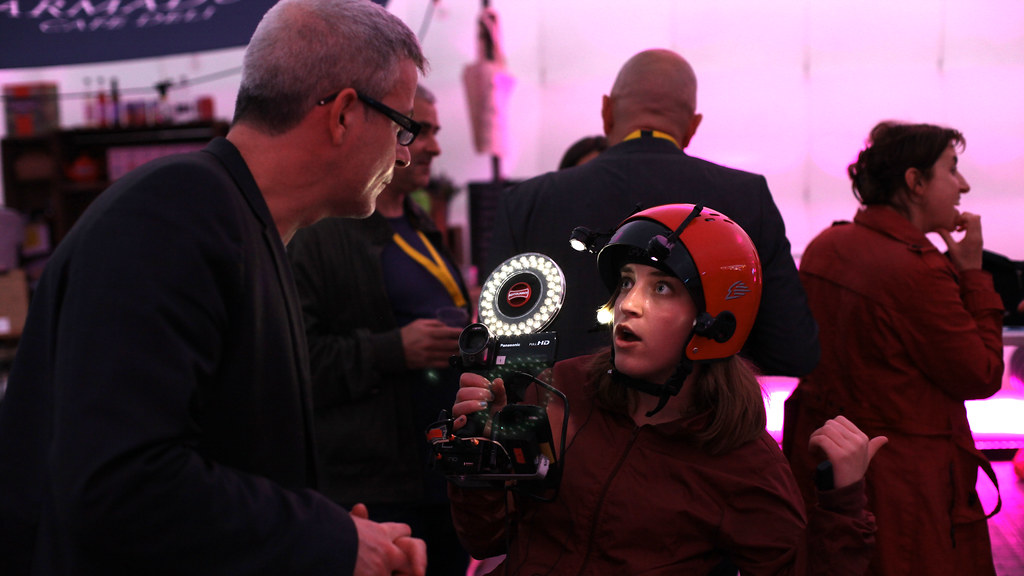
Online viewers input their name, pick a runner to follow while watching their video and help target the other runners to be shot. The online players see and hear through surrogate eyes of the runners, guiding and helping them to target another runner.
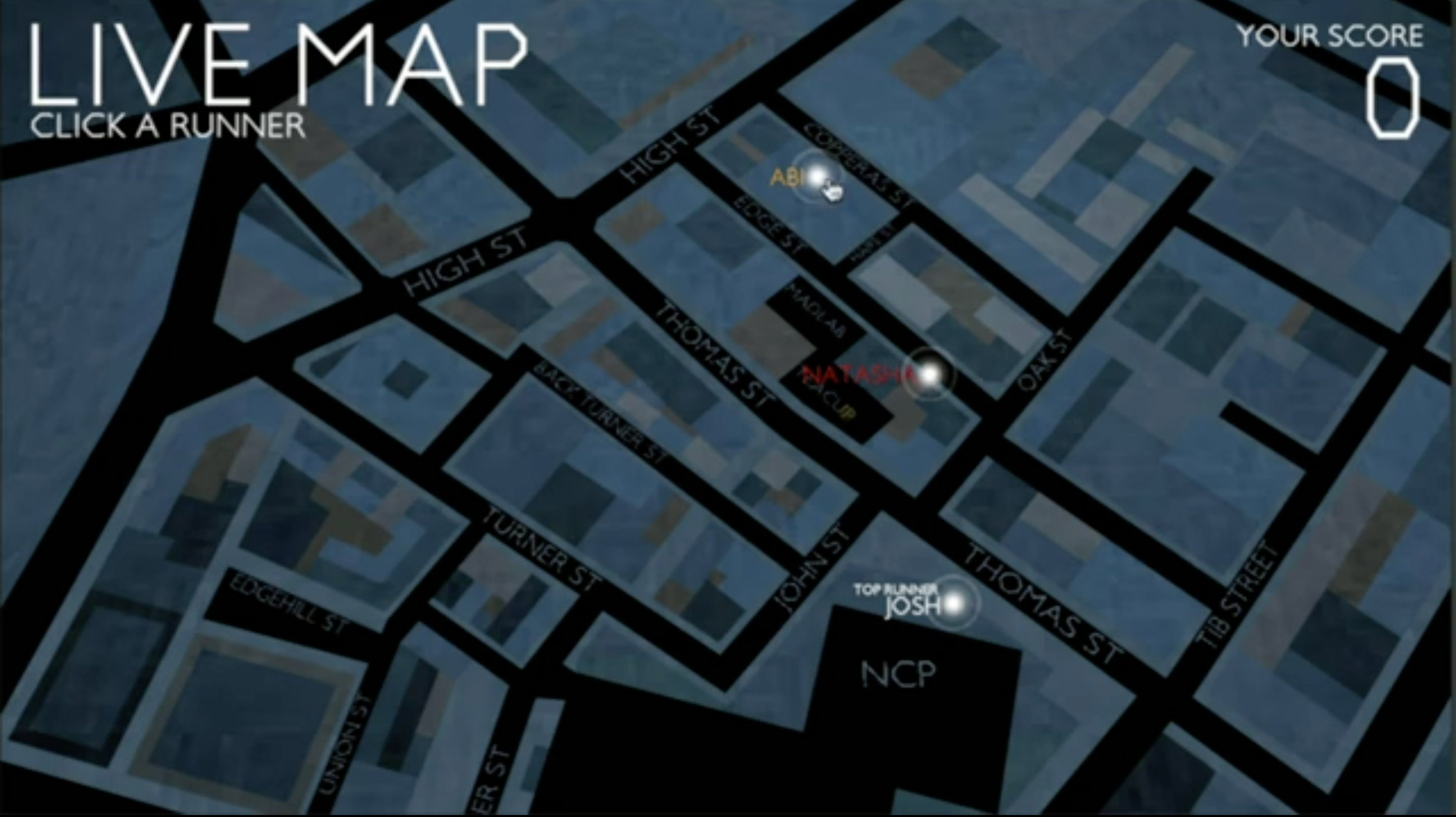
The runners engage passers-by and other strangers to help locate the other runners. The runners engage the public who essentially become participants in the game, even to the point of hanging out together in a pub, or climbing into someone’s car.
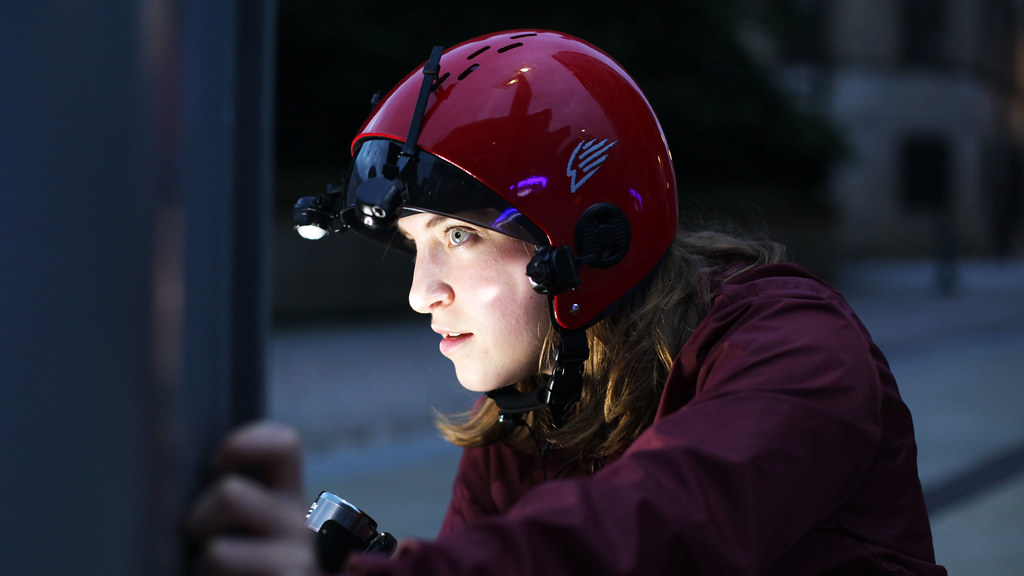
The online players are watching the movement of the runners tracked in the online space, thus superimposing the physical location with the virtual one. If they get a snap of another runner onscreen without getting snapped they score a point. If they get snapped by someone else they lose a life.
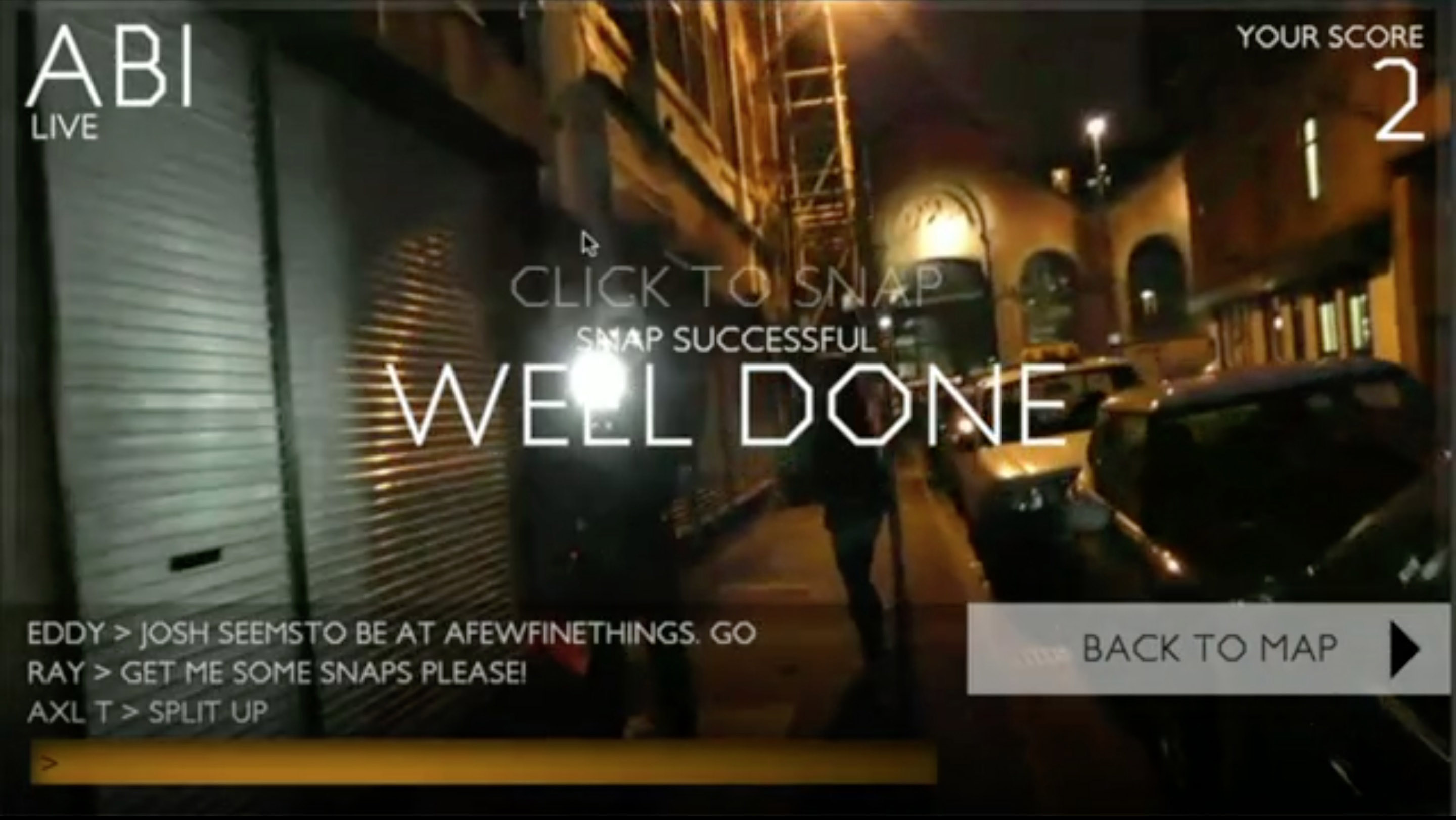
Thus, there is plenty of room for surprise and the unexpected, a simple game of catch the other runners expands into a multitude of occurrences, encounters, engagements, experiences, questions, and interactions between runners, public, and online players.
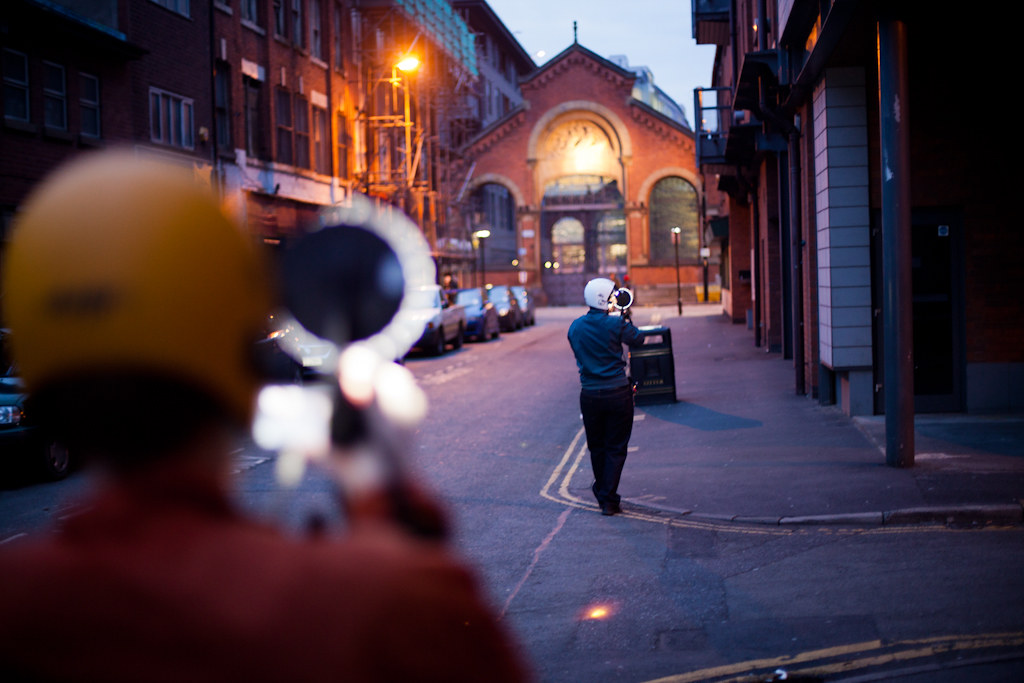
The idea is to combine live television broadcasting with interactive gaming (point scoring, win/lose, etc.) and real-time engagement, chat and conversation between online players, the runners and the public in the physical setting. Like many Blast Theory works, the piece takes the performers down hidden urban spaces, back alleys, the nooks and crannies that reveal the idiosyncrasies of the city environment.
My One Demand (2015)

Seven people stride out across Toronto in an interactive film about unrequited love.
With the premise of unrequited love, seven people (actors), successively older, encounter one another in the streets of Toronto in one continuous film shot. It starts with a baby leaving the Hospital and ends with an elderly woman on the edge of the city.
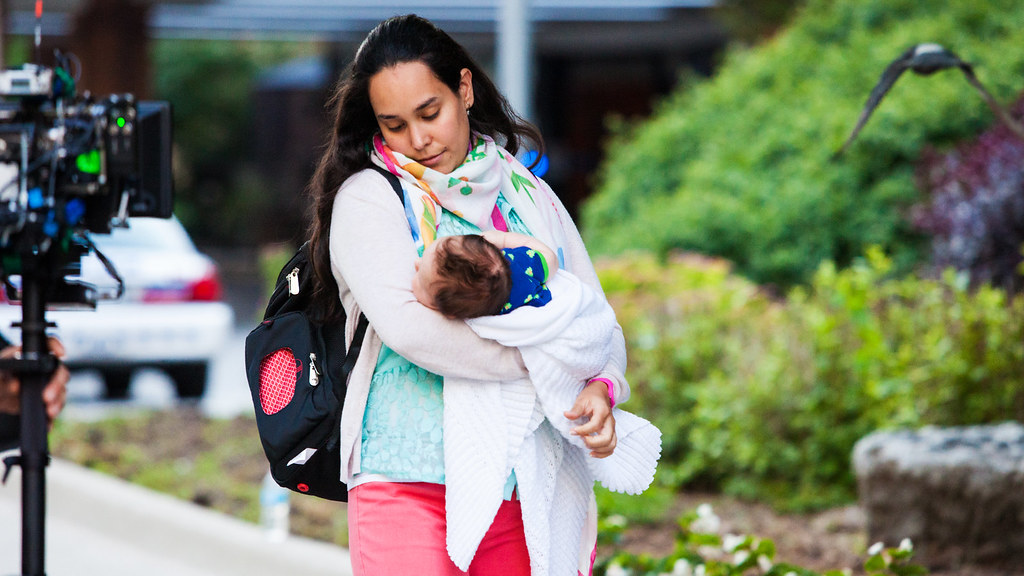
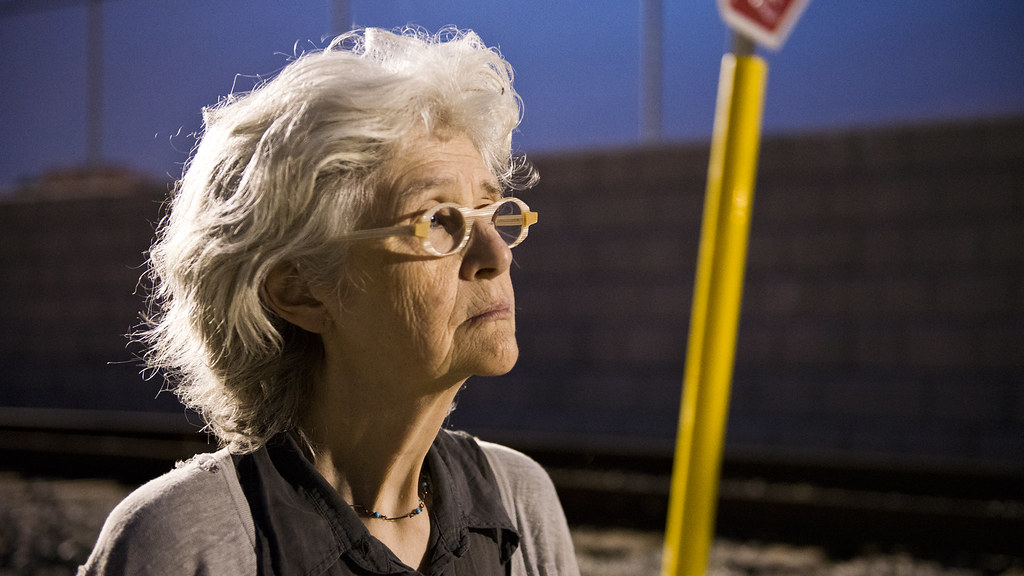
The encounters of the actors as they progress one by one through the film, take place in the golden light of sunset, adding perhaps to the mood of longing. A narrator tells us about them and about herself, about the city here and those farthest away, adding again to the longing for things, not just love.

The seven actors walk across intersections and down sidewalks, finding unexpected short cuts and vantage points. They might break into a deserted house or wriggle through the hole in the fence to their camp on the wasteland. And when each of them meets the next person, we see their encounter unfold live as we hidden and obscure places in Toronto.

This single continuous shot is streamed live online and to a cinema. As viewers watch, they can either interact in real time on their mobile in the cinema or on their computer from anywhere, as the broadcast is streamed live over the Internet.
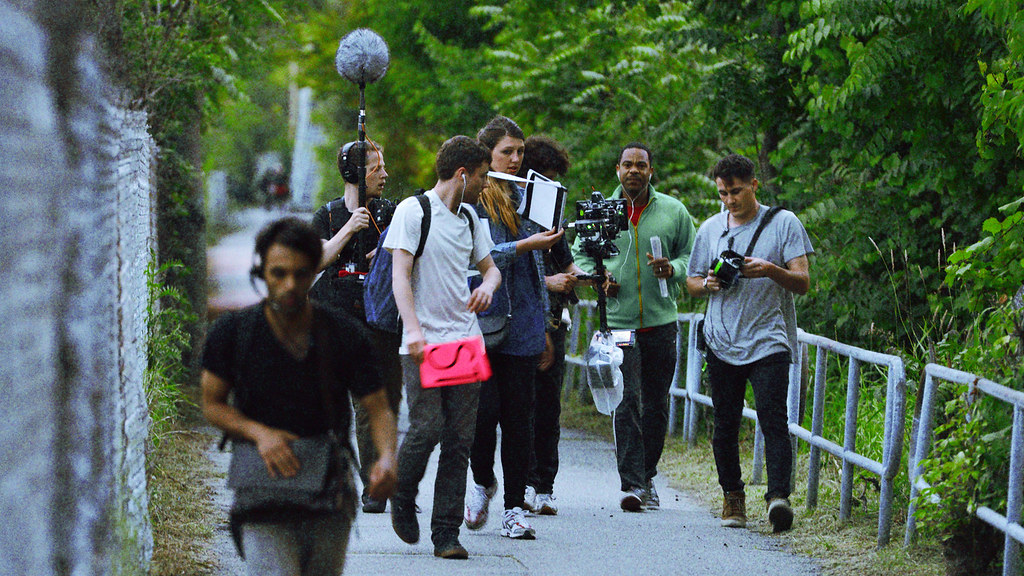
This live interactive broadcasted cinema work has built in surprises, including the audience interaction and a script that is updated with each performance. Viewers can respond to the narration about unrequited love (and feelings), those answers are received in a control booth, where they are inserted into the narrators script: thus giving the audience agency in the work.

The relationship between the narration and the actors is on the edge of the real and the fictional. Anything can happen, including the responses of people on the street to the actors and the shooting, such that the public may or may not enter into the film. The intent is that the script, the action, and the public, the narration can break down and fall apart at any moment, which is the intent of the artists.
Final Project
Students will break up into groups and beginning brainstorming ideas for the final project: “On Location Performance,” which will take place in the environs of Singapore. See the Final Project description and guidelines for more information. We will spend approximately 30 minutes of idea brainstorming followed by group presentations. I want each group to start and share a Google Doc to record and document your ideas.